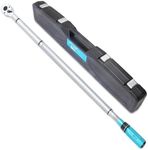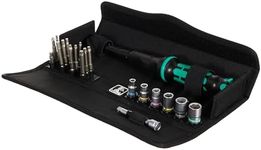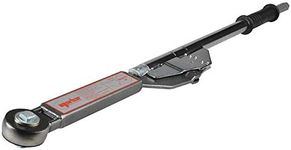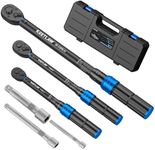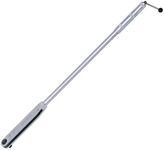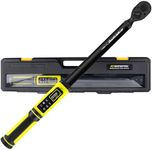Buying Guide for the Best Torque Wrenches
Choosing the right torque wrench is essential for ensuring that bolts and screws are tightened to the correct specifications, which is crucial for safety and performance in various applications. Whether you're working on automotive repairs, bicycle maintenance, or any other mechanical task, understanding the key specifications of torque wrenches will help you make an informed decision.Torque RangeThe torque range indicates the minimum and maximum torque values that the wrench can apply. This is important because different tasks require different levels of torque. For example, automotive work might need higher torque values compared to bicycle maintenance. Torque ranges can be divided into low (up to 30 Nm), medium (30-150 Nm), and high (150 Nm and above). Choose a torque wrench with a range that matches the requirements of your specific tasks.
Drive SizeThe drive size refers to the size of the square drive that connects the wrench to the socket. Common drive sizes include 1/4 inch, 3/8 inch, 1/2 inch, and 3/4 inch. The drive size is important because it determines the compatibility with different socket sizes. Smaller drive sizes (1/4 inch and 3/8 inch) are suitable for lighter tasks, while larger drive sizes (1/2 inch and 3/4 inch) are better for heavy-duty applications. Choose a drive size that matches the sockets you will be using.
AccuracyAccuracy refers to how close the torque wrench can get to the specified torque value. This is crucial for ensuring that bolts are tightened correctly without being over or under-tightened. Accuracy is usually expressed as a percentage, such as ±3%. Higher accuracy is better, especially for precision tasks. For general use, an accuracy of ±4% is acceptable, but for critical applications, look for wrenches with higher accuracy.
Type of Torque WrenchThere are several types of torque wrenches, including click-type, beam-type, and digital torque wrenches. Click-type wrenches produce a clicking sound when the desired torque is reached, making them easy to use. Beam-type wrenches have a scale and pointer to indicate torque, which can be less precise but more durable. Digital torque wrenches offer high accuracy and easy-to-read displays but can be more expensive. Choose the type that best fits your comfort level and the precision required for your tasks.
Material and Build QualityThe material and build quality of a torque wrench affect its durability and longevity. High-quality materials like chrome vanadium steel are preferred for their strength and resistance to wear and tear. A well-built torque wrench will last longer and perform more reliably. Consider the build quality, especially if you plan to use the wrench frequently or for heavy-duty tasks.
LengthThe length of the torque wrench can impact its ease of use and the amount of leverage you can apply. Longer wrenches provide more leverage, making it easier to apply higher torque values, but they can be cumbersome in tight spaces. Shorter wrenches are more compact and easier to maneuver but may require more effort to achieve higher torque. Choose a length that balances leverage and maneuverability based on your working environment.
